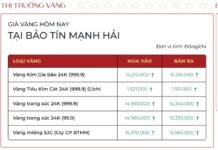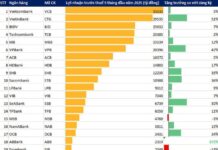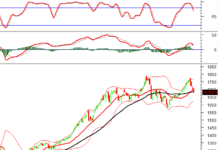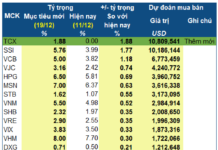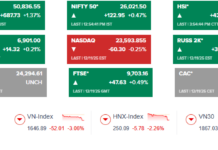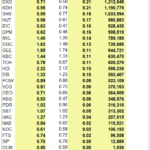In recent times, the apartment market in large cities, particularly Hanoi, has witnessed a surge in selling prices. This is attributed to the diminishing supply while the rapid urbanization process has led to a spike in housing demand, despite the limited land availability. Additionally, the positive impact of infrastructure upgrades and improved public services has contributed to the rapid increase in apartment prices, establishing new price ranges.
Actual surveys indicate that apartment prices in inner-city areas have skyrocketed over the past year. Pre-owned apartments in areas beyond the third ring road, such as Vinhomes Green Bay (Me Tri, Nam Tu Liem), have reached a threshold of 100 million VND per square meter. In My Dinh, The Zei and Matrix One apartments have also surpassed the 100 million VND per square meter mark.
Within the third ring road, numerous projects have recorded price increases of up to double compared to two years ago, with the Tay Ho Tay area experiencing a particularly significant price surge. Specifically, the average apartment price in Tay Ho district currently ranges from 80-150 million VND/m2, while luxury apartment projects command prices between 180-260 million VND/m2. An apartment in Phu Thuong ward (Tay Ho district, Hanoi) is currently listed for sale at 139m2 with a price tag of 35 billion VND, equivalent to 251 million VND/m2.
In the central area of Hanoi, the four districts of Hoan Kiem, Ba Dinh, Hai Ba Trung, and Dong Da have recorded average luxury apartment prices of 200-300 million VND per square meter. Notably, the Grand Hang Bai project has set a record high price of nearly 1 billion VND per square meter, with the lowest priced apartment starting at 60 billion VND.
Apartment prices in central districts have risen astronomically, far outpacing the income of the general population. Consequently, young people today are more willing to relocate to purchase homes. Moreover, as Hanoi’s inner city becomes increasingly crowded and congested, the quality of life deteriorates, making emerging cities with well-developed amenities in the extended central area an ideal choice for relocation, especially for those with higher incomes.

Young people are increasingly opting to live in suburban areas.
For this demographic, purchasing a home is a top priority in their plans for family and financial investment. They are moving out of the central area, seeking real estate in the outskirts of major cities with prices ranging from 2-4 billion VND per unit. From their perspective, the “multi-center” or “multi-polar” cities in the western and eastern regions offer significant advantages.
Ngoc Anh, who recently purchased an apartment at The Fibonan in eastern Hanoi, said: “The house is a bit far from my workplace but it’s located in one of the largest green urban areas in the country, with a great living environment, proximity to schools, hospitals, and local markets, making it very convenient to live here.”
It is understood that Ms. Anh’s apartment is in the 32-story The Fibonan apartment complex, part of the Hung Thinh Villa and Housing Project in Van Giang district, Hung Yen. The project is situated amidst a cluster of four multi-billion dollar mega-cities in the northern region, opposite Vinpearl Land Safari, adjacent to Ecopark urban area, and near international schools and hospitals, a park system covering more than 10 hectares, a golf course, famous cultural and tourist centers of the capital, craft villages, and Bat Trang ceramic museum.
Ms. Anh is not alone in this trend; many young people are relocating to suburban areas in search of affordable housing. Not only are prices lower, but suburban areas also offer a healthier living environment and access to amenities that meet the increasingly sophisticated needs of young people.
Commenting on the current trend of young people moving to the outskirts of Hanoi, Mr. Vu Cuong Quyet – General Director of Dat Xanh Mien Bac, stated that in recent years, suburban districts have prioritized infrastructure development, significantly reducing the distance between the outskirts and the inner city. Furthermore, large enterprises are also seeking new land outside the central area. This has attracted a substantial number of real estate investors, creating a wave of relocation from the center to the suburbs.
According to Colliers Vietnam, the future supply in the Hanoi real estate market is expected to shift towards the outskirts due to infrastructure development. The advantage of these urban areas lies in their well-planned layout, comprehensive amenities that cater to the needs of modern residents, and a healthier living environment with lower population density. Moreover, real estate prices in suburban areas are more competitive compared to the central area, offering a competitive edge for these locations.
However, experts believe that to address the housing shortage, there is a need to expedite the relaxation of regulations related to investment procedures, land allocation, and interest rates to attract more businesses to participate. In particular, affordable housing must be made truly affordable.






